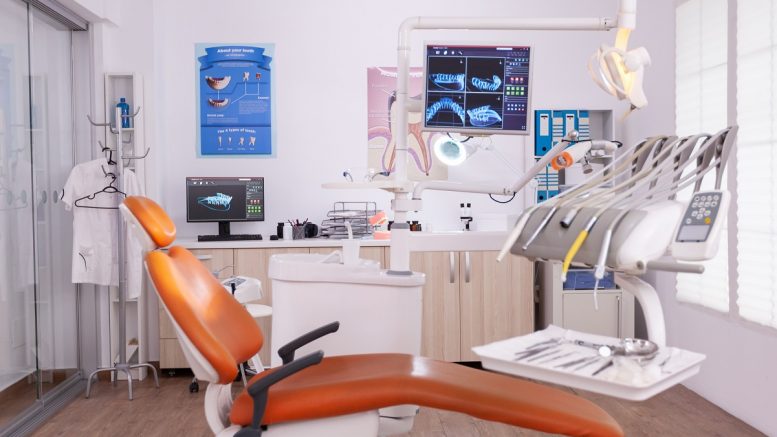Orthodontics is a type of dentistry. It aims to improve the position of teeth within the mouth, fixing crowded, crooking, or protruding teeth. There are both cosmetic and health benefits to these procedures.
The North American orthodontics market is the largest in the world today. This is largely down to the advanced orthodontic treatment options that are available. Of course, Americans tend to adhere to the basics of oral health requirements, but today standards are climbing even higher thanks to the innovations in orthodontics.
What exciting progress is being made here? How will people benefit? Keep reading for some answers.
3D Orthodontics
Technological innovations strive to do three things; hasten workflows, improve results, and save money. 3D orthodontics ticks each box. The most important thing that 3D orthodontics redefines is patient care. Teeth braces can be printed and customized for each mouth for a perfect fit. It makes them more comfortable to wear and more effective in use. 3D orthodontics can also help patients avoid the heftier bills that sometimes come with more traditional options.
3D orthodontics is already available, but it’s projected to become far more popular by 2025. The technology is becoming more widely available and more cost-effective for professionals to integrate into their processes too. As the years go by, there are fewer reasons not to adopt this up-and-coming technology.
Because 3D orthodontics help experts tailor treatment to each patient, consultations may be more productive too. Experts can do a kind of ‘show and tell’ with their patients. They’ll have evidence for the rationale behind their advice. Some people learn better through imagery, too. In the end, 3D orthodontics can help break down communicative barriers between professionals and patients.
Service Around Clear Aligners
Clear aligners aren’t exactly new. Invisalign was invented in 1997 by two Stanford University students, so while that’s somewhat recent, it’d be a stretch to say it’s a fresh innovation.
What is somewhat new is the availability and accessibility of these products today. For example, there’s a dedicated page for the results from ALIGNERCO, which provides clear braces and aligners for all. One of the customer testimonials mentions being sent an impression kit and then a 3D model detailing the teeth’s appearance after each step. ALIGNERCO regularly stays in touch to see how the patient is progressing with the procedure.
Obviously, this is a big improvement from the long-established way of providing teeth straightening treatment. Appointments would be in-person, metal teeth braces would need to be adjusted, and clear aligners may have been more of a luxury. These days, they’re more easily procured and often more cost-effective than metal braces. There’s a remote aspect to the arrangement too, which highlights greater convenience for all parties involved.
Improvement Potential – Digital X-Rays in Orthodontics
The more precision there is when straightening teeth, the better. Advancements in the x-ray department have made things far more promising here. Digital x-rays are now possible, giving orthodontists a far more detailed look at their patients’ mouths. Instead of using photographic film, the tech utilizes digital sensors instead. An intermediate cassette isn’t needed to transfer the data, either.
Because of the way the transfer is carried out, the professionals gain instant access to these images, which means better working conditions for them and faster service for the patient. It used to be patients and professionals alike would have to sit around waiting for the data to be developed, but not anymore!
An entire series of x-rays can be sent after one 360-degree scan. Moreover, patients are exposed to far less radiation with digital x-rays, making it safer. Ultimately, there are no drawbacks, and it all helps improve both the working environment and the patient experience. Everybody wins.
Predictive Qualities
The digitization of orthodontics inspires a more algorithmic approach to these solutions. In some spheres of the sector, some patients can see what their treatment may lead to. It’s important to stress that the results of these predictive interfaces generally offer a rough idea of what a patient will look like post-alignment. Still, it’s well worth a look, as it can be the deciding factor of some patients biting (pun intended) the bullet and going ahead with their teeth straightening procedures.
The tech can work in many ways, but the most common involves a patient using their smartphone to upload a picture of their teeth to the orthodontist’s website. After that, they can see what they may look like after the treatment and may even be able to compare different potential results between metal teeth braces and invisible, removable ones.
Obviously, these measures give patients more of a say in terms of what treatment they experience. It may help them decide whether an investment in one teeth straightening plan is worth it over the other. Perhaps this technology will be more accurate in the decades to come. Still, it’s good enough now to be used.
It might be said an element of fun can be had here too. Thinking about potential looks and customizing one’s appearance is an enjoyable pastime for many.





